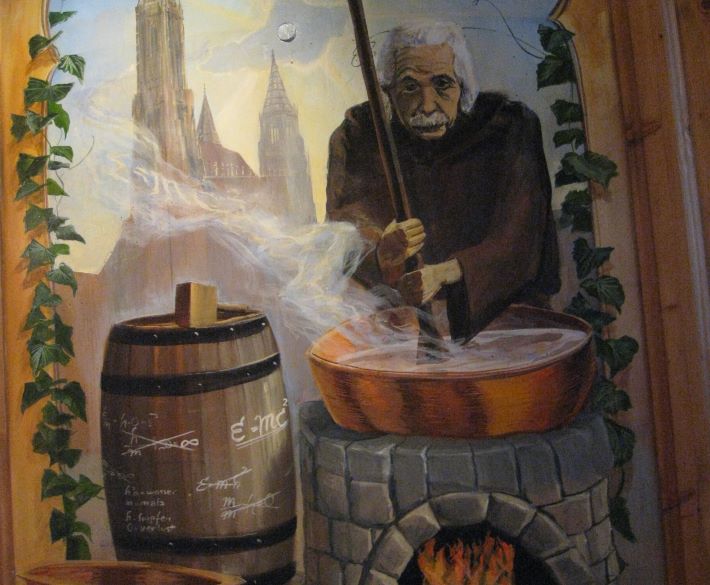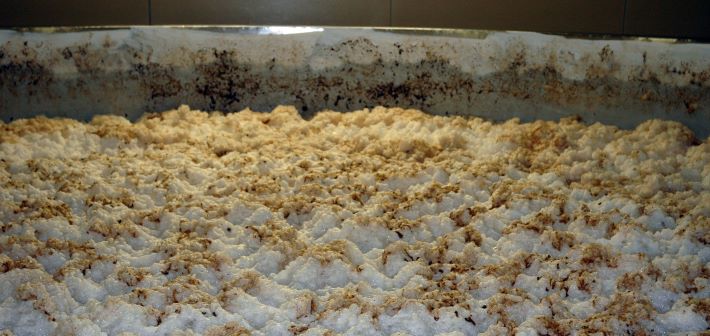
Earlier this week, the BBC posted a story asking a provocative question, “Would you drink genetically modified beer?” That set a different tone for the story than would a headline that reads, “Why wouldn’t you drink a genetically modified beer?” That’s because GMO (genetically modified organism) is a topic perfectly suited for not so well thought out, screaming at the top of our voices, exchanges on X.
And it introduces a question about why more attention has not been paid to the use “thiolized” (a term that Chicago-based Omega Yeast has trademarked) yeast strains play in creating tropical flavors such as guava and passion fruit that have played such an important role in the popularity of IPAs.
Backing up for a moment, it was only two decades ago that a scientist in Japan established that sulfur compounds in hops, known as thiols, contribute to unique aromas found in then new cultivars such as Simcoe and Citra. The race was on to find more varieties that would do the same and to understand what was happening.
And it was less than a decade ago that scientists in France and Belgium published research showing barley malt also contains thiols precursors. Unlike some of the thiols in some hop varieties, those thiols are “bound.” In fact, many hop varieties also contain bound thiols.
Most yeast strains are not particularly good at freeing bound thiols—that is, making them flavor active—in grain or hops, if they do at all. Modified strains from Berkeley Yeast and Omega Yeast are.
It is not really that simple, but I don’t want to bury you in science or turn this into a long read. Thiols are complicated. Genetic modification is complicated. Some of your homework, in this case related to thiols, is behind a paywall at Brewing Industry Guide, but here is a free-to-read primer from 2018. Likewise, The New York Times reported on what Charles Denby was up to in 2018.
And both Omega and Berkeley provide excellent explanations on their website about how they engineer their strains. I recommend this page at Omega or this one.
Miskatonic Brewing in suburban Chicago first used Cosmic Punch before Omega gave it a name. Founder and brewer Josh Mowry had a pretty good idea of how CRISPR/Cas9 gene editing technology works. “We pretty quickly did some dives into what the concerns are. What are the known unknowns,” he said. He shared what he learned with customers. “We’ve only had a couple people raise (doubts), say that it feels unnatural.”
Nonetheless, it seems relevant to remember that not long ago breweries that would call their products craft hesitated to use enzymes. Jack McAuliffe took a stand early. When Frank Prial of the New York Times visited New Albion Brewing in 1979, he wrote, “McAuliffe boasts that his beer is a completely natural product. ‘We use malt, hops, water and yeast,’ he said. ‘There are no enzymes.’”
If high gravity beers didn’t establish that has changed, Brut IPAs certainly did.
Plenty of brewers embraced modified yeast strains just as quickly. Have they all gone out of their way to inform consumers that the strain in this beer may be different than the strain in that beer? Of course not.
Quite honestly, I’m not sure they think it is important. In a conversation with a brewer last Friday, after he mentioned the Berkeley strain in the beer I was drinking the discussion did not then turn to genetics. Instead, we talked about what portion of the thiols might have come from barley malt and what portion from hops. (Yep, you did not want to be there for that.)
However, members of the brewing industry understand this is an important topic. Last year, four authors examined the terminology, science and regulation of genetically engineered yeast across seven pages in MBAA Technical Quarterly. Trust me, it was technical. The authors examine the topic from multiple views, acknowledging the “positives of genetic engineering are not without rigorous debate on innovation and safety concerns.”
However . . . “The world, and indeed the whole of the brewing industry, is now catching up to the environmental reality that agricultural producers have been facing for the past several decades. With the rapid increase in the global population and the rising challenges of climate change, biotechnology offers significant advantages that may be crucial to sustainability.”
The year before, in another TQ issue (Vol. 58, no. 2), White Labs founder Chris White wrote about both sides of the genetic engineering debate. He concluded by focusing on transparency:
“The rise of plant-based meat products is a good example of how truth in labeling operates for much of the food and beverage industry. There are currently lawsuits from manufacturers over what they have to put on the label. They are fighting over the use of the word “meat,” the font size, and more. The brewing industry is much more transparent with what they put on the label.
“If you use GMO yeast, should you tell the consumer on the label or description? I would say ‘yes,’ that we should stay on the side of transparency.
“It is not about whether it is right or wrong, or if it is good or bad for us. It is about communicating our passion and pride to the consumer—not what labeling laws say we have to do. That can be what the rest of the food and beverage industry focuses on.”

 Piney River Brewing in the early days (before expansion)
Piney River Brewing in the early days (before expansion)
 “Learn to Homebrew Day” began as “Teach a Friend to Homebrew Day” in 1999. One year shortly after that the Dukes of Ale of Albuquerque, the homebrew club I was a member of, hosted an event at a local brewery that most accurately could have been called “Here Are Some Ways to Make Beer at Home.”
“Learn to Homebrew Day” began as “Teach a Friend to Homebrew Day” in 1999. One year shortly after that the Dukes of Ale of Albuquerque, the homebrew club I was a member of, hosted an event at a local brewery that most accurately could have been called “Here Are Some Ways to Make Beer at Home.”